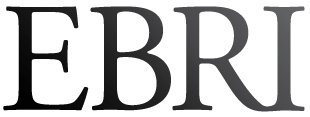Summary
Availability, Contributions, Account Balances, and Rollovers in Account-Based Health Plans, 2006–2009
ENROLLMENT IN CONSUMER-DRIVEN HEALTH PLANS: The share of the adult population with private health insurance enrolled in account-based health plans (so-called "consumer-driven" health plans, or CDHPs) remains small but continues to grow. In 2009, 4 percent of the adult population with private health insurance was enrolled in an health reimbursement arrangement (HRA) or had a high-deductible plan with an health savings account (HSA), up 1 percentage point from the previous year. An additional 4.9 percent were eligible for an HSA but did not have such an account. Overall, 8.9 percent of adults with private insurance were either in a CDHP or were in a high-deductible plan that was eligible for an HSA, but had not opened an account.
CDHP ELIGIBILITY: Among individuals with traditional employment-based health benefits and a choice of health plan, 39 percent were eligible for a CDHP in 2009, up from 33 percent in 2006.
CONTRIBUTIONS: Workers with employee-only coverage have seen their annual employer contributions decrease, while those with family coverage have seen their annual employer contributions increase, such that nearly three-quarters of workers with family coverage receive a contribution of $1,000 or more. Both the amount of money that individuals have accumulated in their accounts and the amounts rolled over from year-to-year have grown: Those reporting a rollover of $1,500 or more increased from 13 percent in 2006 to 31 percent in 2009.
Retirement Plan Participation and Asset Allocation, 2007
PARTICIPATION RATES AND PLAN TYPE: The percentage of family heads who participated in an employment-based pension or retirement plan remained basically unchanged from 1992–2001 (at almost 49 percent) before declining nearly 2 percentage points by 2007 to 46.9 percent. Over that period, participation in a defined contribution (401(k)-type) plan grew sharply. In 2007, 18 percent of family heads who participated in an employment-based retirement plan had a defined benefit plan only, almost 64 percent had a defined contribution plan only, and the remaining 18.5 percent had both a defined benefit and defined contribution plan.
IMPORTANCE OF ASSET ALLOCATION: The allocation of retirement assets is affected by demographic factors (income, education) and by ownership of other types of retirement plans: Those who own 401(k)-type plans and IRAs are more likely to be invested all in stocks if they also own the other type of plan. Ownership of a defined benefit plan also is correlated with an increased probability of a 401(k)-type participant being invested all in stocks.

